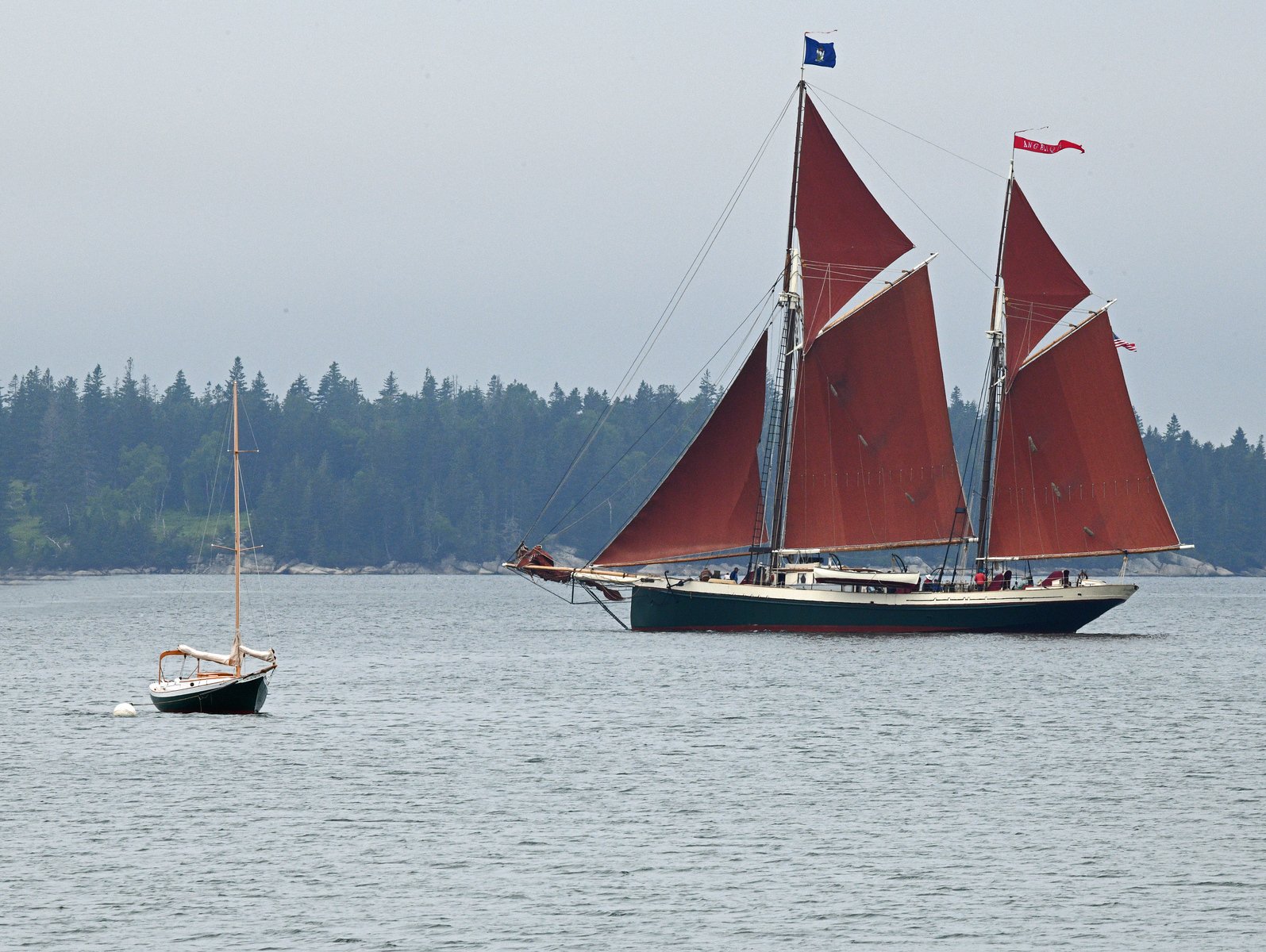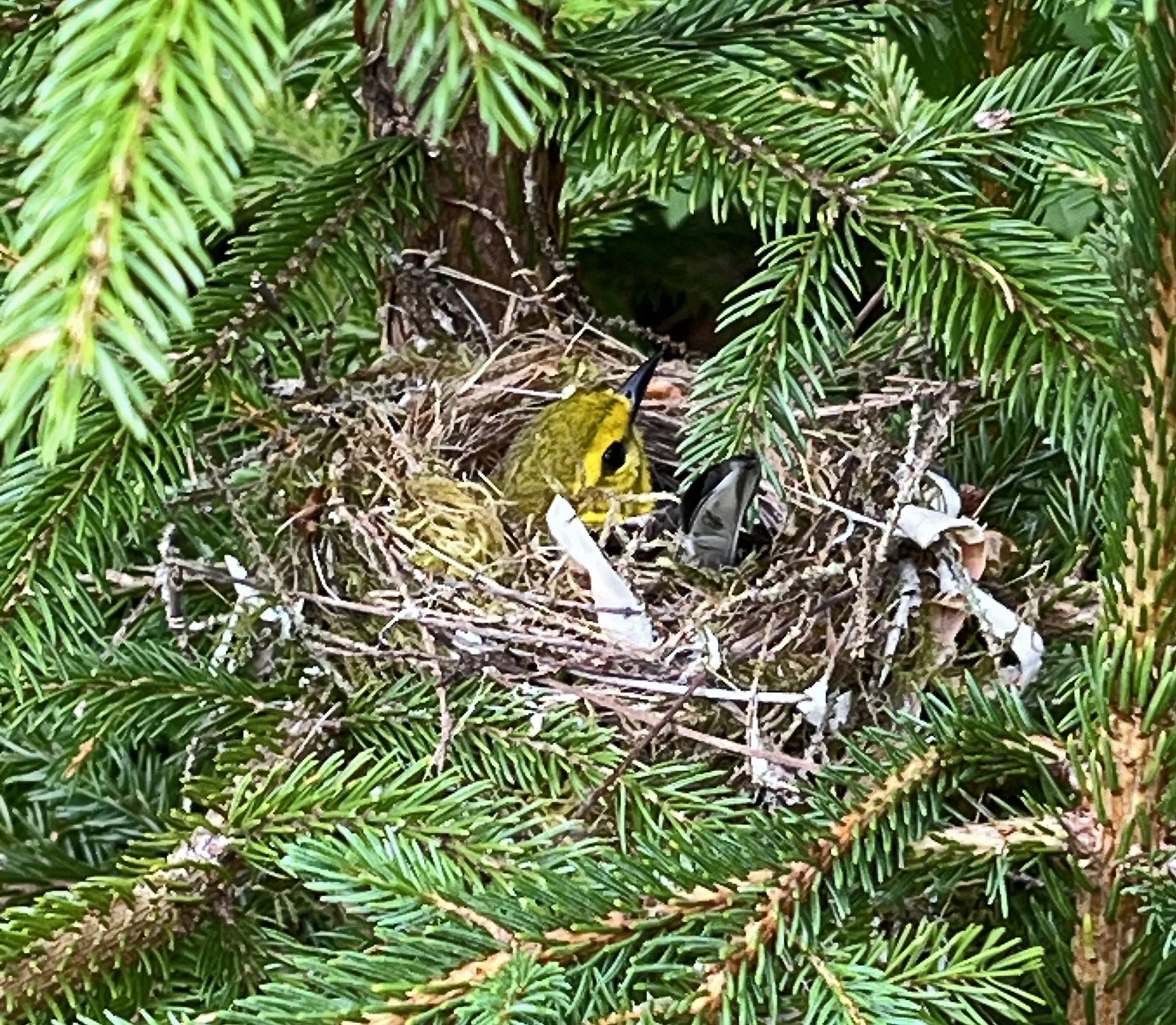I got lucky yesterday at the Osprey Nest, the summer home of our local fish hawk couple, Ozzie and Harriet. It was a chilly, gray day for photography, but an illuminating one for biologic verification: There now is no doubt in my mind that Harriet is brooding youngsters, probably three or four, even though I have not seen one yet.
Harriet has all the moves of a sheltering mother – outspread wings to protect nestlings below; sometimes (as above) quickly raising her wings due to apparent movement under her; sometimes leaving the nest for a few minutes of wing-stretching, and being careful when she returns, and – yesterday – appearing to be delicately feeding bits of fresh fish to youngsters deep in the nest.
Of course, Ozzie reliably delivers the fish daily, usually after eating the first third for his own lunch. Harriet then usually eats her fill and then feeds the youngsters.
(Images taken in Brooklin, Maine, on June 17, 2024.)


































































































































